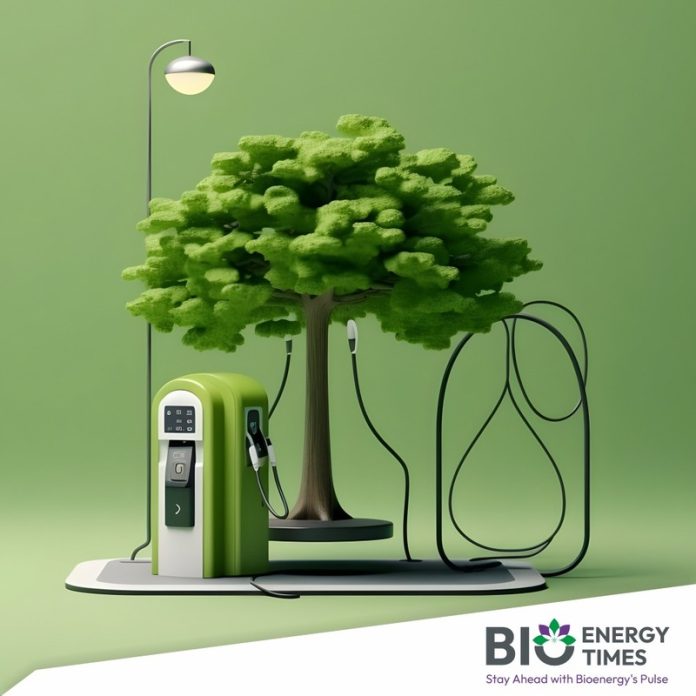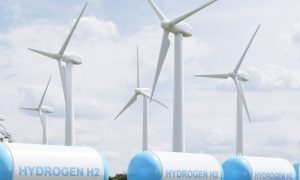Energy firms look to make green hydrogen cheaper

Companies like Avaada, Hygenco, and Thermax are working to lower green hydrogen production costs, currently at $4-$5 per kg, aiming for $1-$2. With India’s target of producing 5 million tonnes by 2030, key innovations in electrolyser technology, renewable energy integration, and hydrogen storage are crucial for cost reduction and supporting the country’s shift toward sustainable energy.
As green hydrogen becomes the buzzword in renewable energy, companies such as Avaada Group, Hygenco Green Energies, and Thermax are working on reducing its cost to make it more economical. Besides, Reliance Industries (RIL) and Adani Group have already annouced plans to make green hydrogen cheaper.
While green hydrogen currently costs around $4-$5 (Rs 334-Rs 418) per kg — around twice the price of grey hydrogen – several companies are working on bringing it down to $1-$2 (Rs 83-Rs 166) with new technologies, innovative products and more .
As the country has set the ambitious goal of producing 5 million tonne green hydrogen by 2030, reducing production costs is critical, according to experts.
Avaada is integrating artificial intelligence (AI) and advanced analytics into its operations. “AI helps us optimise energy production and consumption patterns, predict maintenance needs, and enhance the overall efficiency of our renewable assets. This technological edge allows us to lower costs and improve reliability, “ chairman Vineet Mittal said.
Its dedicated electrolyser team is focused on improving stack energy consumption. By advancing electrolyser technology and increasing efficiency, it reduces the amount of electricity needed to produce hydrogen, directly lowering production costs, Mittal said. Avaada is also looking to get into advanced fuel cell technologies and hydrogen storage solutions.
“At Avaada, our ambition is to drive down the cost of green hydrogen significantly, much like the remarkable reduction observed in the renewable energy sector over the last decade,” Mittal added.
Hygenco is leveraging an advanced energy management and control system to optimise operations, said co-founder and CEO Amit Bansal. By harnessing the power of IoT, AI and machine learning, the company drives real-time yield maximisation, effectively reducing the production costs of green hydrogen and ammonia. “Our energy control management system monitors a wide array of parameters—such as solar PV generation, state of charge, hydrogen generation, pressure, temperature, and purity from the electrolyser—making autonomous, real-time decisions to ensure peak efficiency,” Bansal added.
Hygenco plans to set up a large-scale green ammonia project in Gopalpur, Odisha, with a production capacity of 1.1 million tonne per annum. It will be implemented in multiple phases between 2027 and 2030. Additionally, it is on track to produce 75,000 tonne green hydrogen per annum by 2026.
Kapil Maheshwari, executive director & CEO at Welspun New Energy, said there are multiple levers that the company is actively pursuing to cut the cost of green hydrogen. The firm is optimising the mix of solar and wind along with battery as energy storage to optimise the size, capacity utilisation factor and tariff of renewable power. For long duration energy storage, it is considering using large-scale pumped hydel projects, Maheshwari said. “Different corporate structures are also evaluated to improve sourcing and capex. For opex optimisation, we are planning complete digital solutions to monitor large-scale plants and robotic cleaning of solar modules. This will be a mix of strategic optimisation for sourcing key materials, land and improving implementation timelines,” he added.
Pune-based Thermax has revived its green hydrogen plans and recently entered into a partnership with Ceres to manufacture, sell and service stack array modules based on the latter’s solid oxide electrolysis technology. It is looking to localise the technology over the next few years, MD & CEO Ashish Bhandari said. The company will be able to deliver systems that are 25% more efficient than incumbent low-temperature electrolysis technologies, he added.
RIL and Adani Group are also working on bringing down the cost of green hydrogen and producing derivatives of green hydrogen.
RIL, which is looking to invest $10 billion in the green hydrogen ecosystem, has set an ambitious goal of achieving a production cost of $1 per kg of green hydrogen by 2030.
RIL is building an electrolyser giga factory, set to be operational by 2026, chairman Mukesh Ambani said at the company’s 47th AGM last month. The company is delivering green hydrogen and green fuels at most economical costs, he said.
The conglomerate is also building capabilities for futuristic electrolysis-based technologies to tackle challenges in energy efficiency and for capital cost reduction for next-generation electrolysers.
Adani Group is aiming to develop Adani New Industries as one of the world’s leading developers of green hydrogen and its derivative products. It plans to develop an integrated green hydrogen ecosystem to support up to 1 MMTPA of hydrogen production by 2030 and 3 MMTPA over the next 10 years. This will include its derivatives such as green ammonia, green methanol and sustainable aviation fuel.
Source Link : https://www.financialexpress.com/business/industry-energy-firms-look-to-make-green-hydrogen-cheaper-3625513/

















